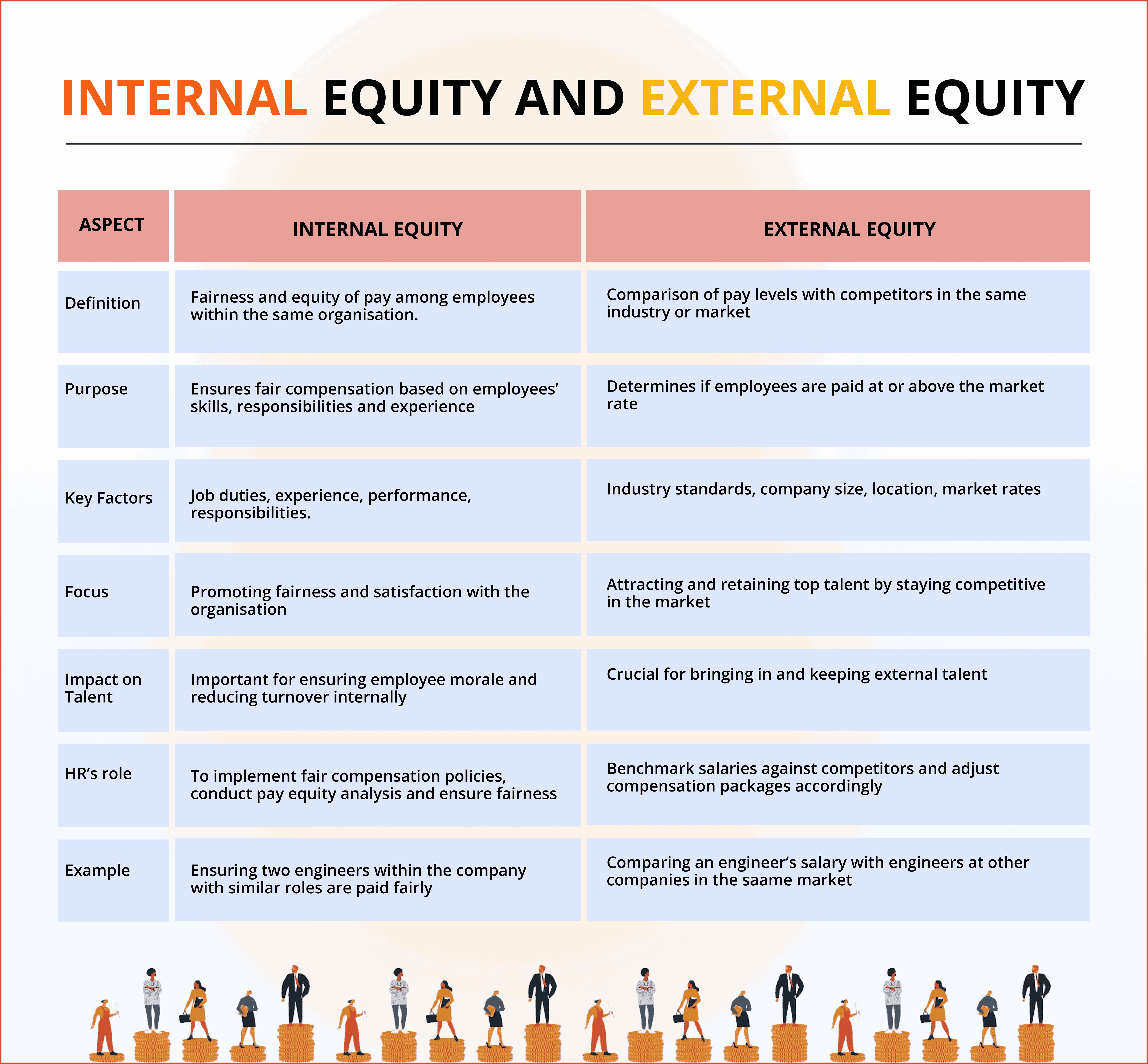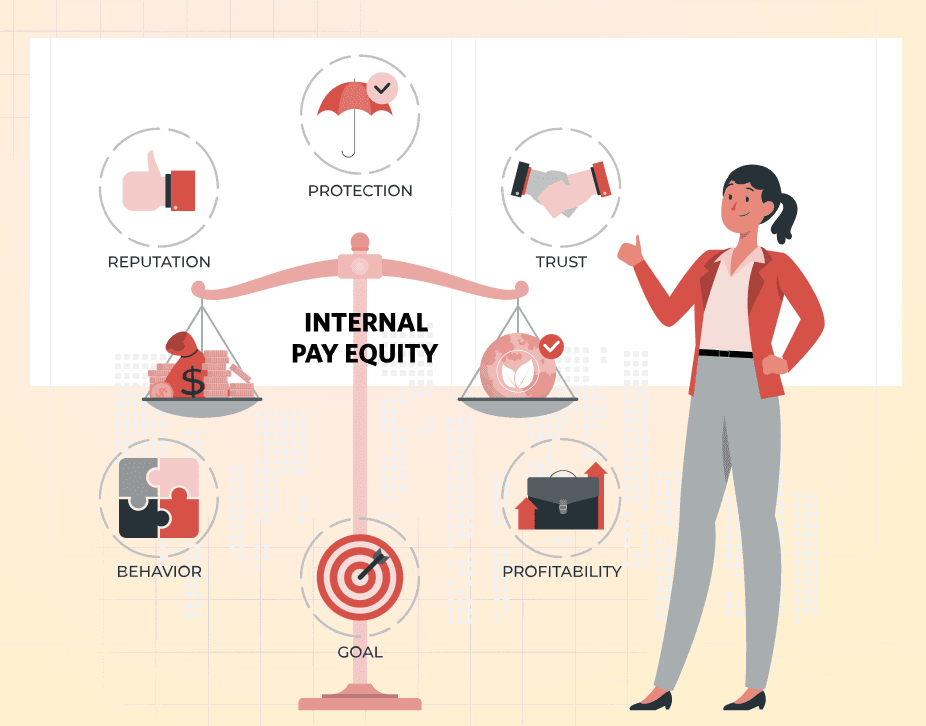
The global workforce is changing very fast demographically. According to one study, 25% of millennials job hop. That is why you must not forget to do everything an HR professional can do in order to retain high-quality candidates.
First step to achieve that is by ensuring fairness and objectivity in the workplace, as it benefits both employee and employer, thereby achieving internal equity becomes vital.
It plays an important role in making sure that each employee receives compensation that is commensurate with their skill level, duties and tenure. That is what internal equity is all about.
But keeping the internal equilibrium is something, which is no less a struggle for any size of enterprise.
This article will explain the distinctions between internal and external equity, go over best practices for promoting internal equity, look at typical roadblocks, and emphasise the critical role HR professionals play in advancing internal equity.
Comparing employees' positions within the company to make sure that everyone in the same position gets paid equally, regardless of other considerations, is known as internal pay equity. This compensation plan can benefit both employers and workers by encouraging a sense of fairness, dedication, and excitement.
It is observed that 60% of those individuals interviewed have a feeling that their workplace is transparent or unbiased; therefore, they may get motivated and work effectively.
External and internal pay equality constitute two essential factors that should be considered while preparing remunerations. In short, "external pay equity" is defined as simply the pay disparity of a firm with its competitors in the same sector or industry. Internal pay equality, on the other hand, states for the fair and equitable reward that employees get inside an organisation.
Here's a comparison of the distinctions between internal and external pay equity to help you understand better:

HR is in charge of handling any challenges or concerns about pay equity and encouraging a transparent and equitable culture across the whole company. They can contribute to the achievement of a work environment where all employees feel appreciated, respected, and inspired to give their best work by emphasising internal equity.
Internal pay equality is the practice of paying individuals fairly and consistently within a company, taking into account their contributions, jobs, and skill sets. Achieving equal compensation increases employee morale, fosters trust, and aids in retaining top personnel. Additionally, it encourages a culture of justice, which lowers attrition and fosters sustained corporate success.
Internal pay equity is influenced by a number of matters. Recognising these can aid organisations in making well-informed decisions regarding compensation:
Internal pay equity sounds straightforward enough, but it's actually quite challenging to achieve for a variety of reasons.
In order to overcome these problems, organisational success depends on the proactive approach of the organisation with regards to internal pay fairness.
Clear communication and provide necessary training- HR specialists and managers should be trained on fair pay procedures and how to handle pay equity issues with their workforce.
In order to create internal pay parity, companies ought to take into account the following:

By establishing open pay policies, establishing precise criteria for compensation, and coordinating pay structures with the company's values, organisations can attain internal pay equity. To ensure fair remuneration, regular reviews of pay practices, data-driven decision-making, and open communication are crucial.
Maintaining internal pay parity is essential to having a motivated and effective workforce. Through the implementation of best practices, increasing transparency, and removing obstacles, organisations can establish a fair and equitable pay model that is profitable to the company and its workforce.
Try CompUp if you want to simplify your pay equity process. It's an effective tool that makes it easy to benchmark, analyse, and adopt fair pay policies. With CompUp, you can make sure your workforce gets compensated appropriately and maintain an edge ahead of industry standards.
Community Manager (Marketing)
As a Community Manager, I’m passionate about fostering collaboration and knowledge sharing among professionals in compensation management and total rewards. I develop engaging content that simplifies complex topics, empowering others to excel and aim to drive collective growth through insight and connection.
Revolutionizing Pay Strategies: Don't Miss Our Latest Blogs on Compensation Benchmarking